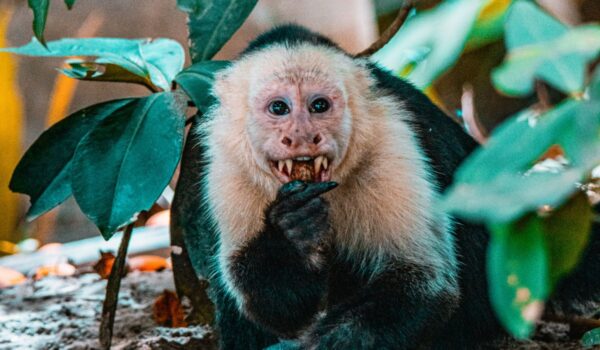Costa Rica, with its verdant rainforests, stunning beaches, and vibrant wildlife, attracts millions of tourists each year. However, hidden beneath the allure of its natural beauty lies a range of dangerous animals that require vigilance and respect. For the intrepid traveler eager to explore the wonders of this Central American paradise, knowing what to watch out for can transform your experience from relaxing to exhilarating, if not a tad perilous. Let’s delve into the realm of Costa Rica’s dangerous creatures—understanding their habits, habitats, and how to navigate this wild world can open your eyes to a fascinating ecosystem teeming with life.
Understanding the Terrain and Its Inhabitants
Costa Rica’s diverse landscape is home to an astonishing variety of wildlife. From the coastal regions to the mountainous terrain, the habitats are as contrasting as the creatures that occupy them. Each ecosystem houses its own array of potential dangers that tourists should be mindful of. As you embark on your adventures, consider educating yourself about the inhabitants of these environments.
Snakes: Silent Yet Deadly
Snake species such as the Fer-de-Lance (Bothrops asper) and the Bushmaster (Lachesis muta) reign as some of the most venomous snakes in the world. The Jardín de Mariposas in Monteverde or the lush terrain around Tortuguero is where these serpents may be encountered. They thrive in leaf litter but often remain concealed, making them easy to overlook until an accidental encounter occurs. Their venom can be lethal to humans, and swift medical attention is imperative if bitten. Tip: Wear sturdy hiking boots and avoid walking in areas with dense underbrush.
Spiders: The Arachnid Enigma
In the shadows of Costa Rica’s forests lurks the infamous Brazilian Wandering Spider (Phoneutria spp.), often cited as one of the most venomous spiders globally. These nocturnal hunters are known to wander and might unexpectedly cross paths with unsuspecting visitors. Although their bites can be excruciating and potentially dangerous, fatalities are rare given prompt medical treatment. Always conduct a diligent inspection of your accommodation for spiders before settling in. Tip: Shaking out clothing and shoes before wearing them can save you from an unpleasant surprise.
Coatí: The Mischievous Bandit
While they may seem harmless, Coatís (Nasua narica) can be a source of unexpected trouble. These raccoon-like creatures are incredibly curious and are known for their boldness, especially when it comes to food. If your travel itinerary includes places like Corcovado National Park or Manuel Antonio, be cautious with your belongings. A hungry or agitated coatí could easily snatch your snacks or bags, leading to a chaotic encounter. Tip: Keep food securely stored and avoid feeding wildlife at all costs.
Ceiba Tree: Not All That Glitters is Gold
Wandering through the lush tropical landscapes, you may be tempted to lean against the towering Ceiba tree (Ceiba pentandra), which often appears inviting with its expansive canopy. However, be aware that the spiky trunk can easily pierce skin, potentially causing injury. Furthermore, the area around these trees is sometimes home to poisonous plants. Tip: Maintain a distance from these majestic giants to evade potential harm.
Sharks: Where Ocean Meets Adventure
For those drawn to Costa Rica’s sparkling ocean waters, encounters with sharks might be a concern. Species such as the Bull Shark (Carcharhinus leucas) inhabit the brackish waters of river mouths, presenting potential dangers for unsuspecting swimmers. While attacks are rare, caution is advisable when engaging in water activities. Tip: Observe local advisories regarding shark sightings and swim only in designated safe zones.
Jellyfish and Other Marine Menaces
In addition to sharks, jellyfish, particularly the Portuguese Man O’ War (Physalia physalis), can pose significant threats to beachgoers. With their tentacles capable of delivering painful stings, these celestial creatures drift along the coastline, making awareness key when frolicking in the surf. Look for red flags or posted warnings on local beaches to ensure a safe day by the ocean. Tip: If stung, rinse the area with seawater and avoid freshwater, as it can aggravate the sting.
Ants: The Tiny Tyrants
Believe it or not, some of the smallest creatures in Costa Rica can cause the most aggravation. Leafcutter ants and bullet ants exemplify the powerful nature of the insect kingdom. The bite from a bullet ant (Paraponera clavata) is said to be the most painful of any insect, often likened to a gunshot. When traversing through jungles or hiking trails, stay on paths and refrain from disturbing nests. Tip: Observe these ants from a distance to appreciate their fascinating behavior without risking an encounter.
Final Thoughts: Embracing the Wild with Caution
Costa Rica is a land of unparalleled natural beauty and biodiversity, teeming with spectacular sights and thrilling encounters. By informing yourself about the potentially dangerous animals lurking within its depths, you can embrace the adventure while respecting nature’s boundaries. Traveling through Costa Rica can be one of the most enriching experiences of your life, fostering a deeper respect for wildlife and subsequent environmental conservation. When you know what to look out for, each trek through the verdant trails becomes a movement toward understanding and cherishing this captivating land they call home.
